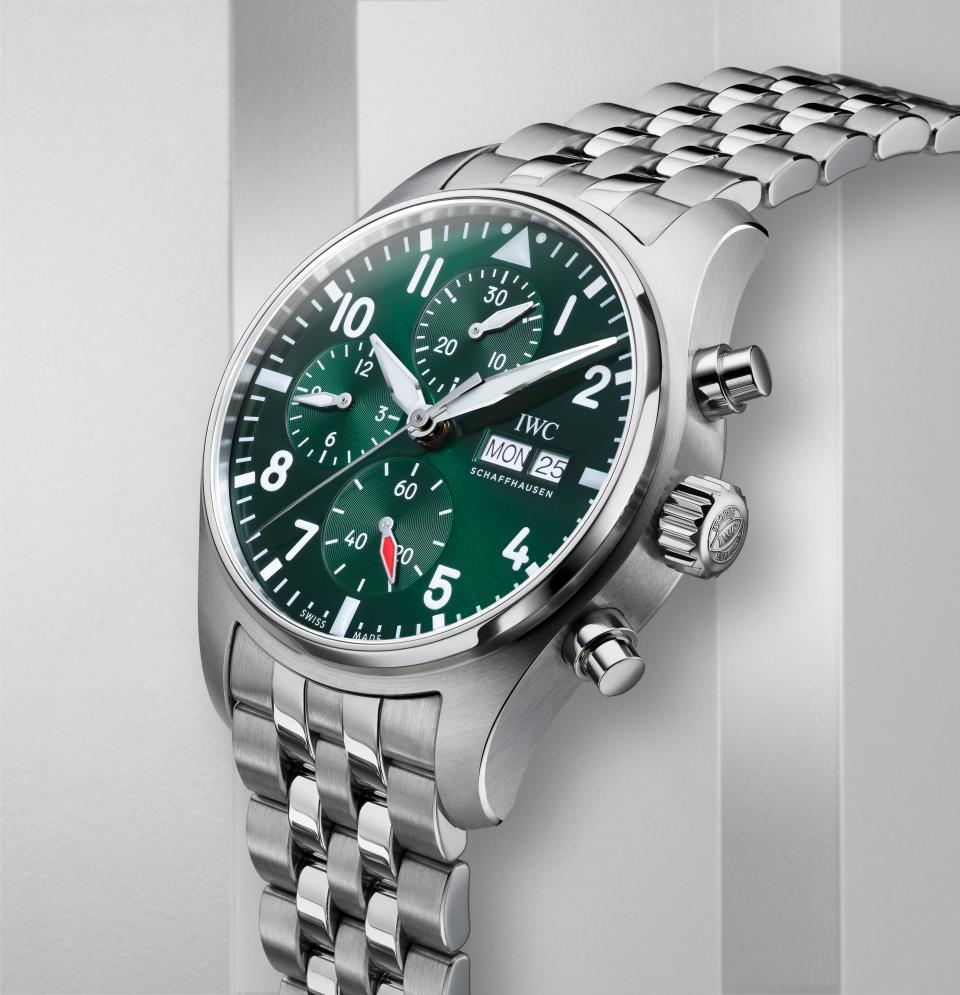What Makes the Ultimate Starter Watch?
IWC’s famed pilot’s watch is so iconic for its scale that it’s literally known as the Big Pilot. Which makes the news out of this year’s big watch trade show that IWC’s Big Pilots are getting smaller a rather...big deal.
IWC, CEO Christopher Grainger-Herr explained, is taking the shrink ray to several of its most iconic pieces to make them that much more wearable. Grainger-Herr knows better than most how much size matters: he came up at the company through the brand’s museum The Big Pilot started at a hulking 55 millimeters and until Wednesday came in at a still-heavyweight 46mm. Now it’s 43. He says they tested different sizes, spending time debating 42 and 44mm iterations. In the middle of this process, he’d wake up in the “middle of the night after having either nightmares or beautiful dreams” about those millimeters, he tells me. But I wondered: what happens when a Big watch becomes something a little more like a Medium? I spent a week test driving the Pilot Chronograph, which went from 43 to 41mm, to find out.

Grainger-Herr’s IWC is designed for first timers: prices typically range from $4,000 to below $15,000 before jumping for the special editions. No watch better exemplifies that spirit, Grainger-Herr says, than the chronograph I wore: the Pilot’s Watch Chronograph IW388101. “You have the horological complexity of the chronograph in a daily wear watch,” he says. “I think if you had to pick a first timepiece, you can wear this anywhere and you can keep it for 20 to 30 years and enjoy.”
So how did it feel? Hefty, most of all. I don’t mean that in a bad way, in that it anchored my noodle arm down or wore me out. Despite its shrunken-down size, the watch is heavy like gold or big ideas of the “duuuuude” variety—from the initial interaction it’s clear there’s something substantial going on. Once I got used to the sheer substance of the watch, I found new and more childlike ways to entertain myself. The blue of the dial would strobe from dark-as-a-lagoon navy to something softer as I rotated my wrist to make it catch the light. I’d click in the pusher that activated the chronograph and imagine the intricate series of gears and wheels whirring into action. I kept the watch on my bedside table and would peek at it in the night to observe at the now-glowing hands. John Mayer once said he used an IWC Big Pilot as a bedside clock because of its size. I had less success than Mayer with my version.

Grainger-Herr wants to bring clarity to the question of what qualifies as a starter watch. A few years back, he explains, IWC released a very limited-edition perpetual calendar with a face the deep red of a full-bodied Cabernet and red-gold detailing, in a partnership with brand ambassador and Formula 1 driver Lewis Hamilton. The price tag was $49,200. Grainger-Herr remembers being asked if the hip new partner and standout design was made to appeal to a younger generation of collectors. Now, he scoffs at the idea that a 20-something buying their first watch would be after something so unique—and would then have almost 50 grand to drop on it. “This is a collector’s ninth, tenth, eleventh watch,” he says. The price point of the new chronograph—$6,500—helps, but what new collectors really need is something simple. After all, a person starting off their collection will only have this single watch, so it needs to check plenty of boxes. “Does it work in the office? Does it work when I'm doing sport? Does it work in a bar on a Saturday?” Grainger-Herr asks. “What we see is that first-time watch clients usually have something iconic in their mind. So very often the first choice of a mechanical watch is actually something extremely timeless, and often a design that has an 80-year-plus DNA.”

IWC has a lot of competition in the starter-watch category, but I understand Grainger-Herr’s argument for his piece. Omega’s Moonwatch would surely have something to say in a fight over which roughly $6,000 chronograph-equipped sports watch represents the ideal starting point for a collection. At that price, Rolex wants to know if you’ll accept a pretty colorful dial and all that Crown cool. Patek Philippe, meanwhile, is sipping Veuve Clicquot and watching the scrum from its castle on the hill. If you’re only going to have one watch, Grainger-Herr isn’t wrong about the qualities you should look for. IWC’s even comes with a system that made it possible for me to easily switch between rubber, metal, and leather bracelets, so you can trick yourself into believing you’re really getting multiple watches in one (Omega’s watch shares this capability). I could have worn my IWC to the office or bar, were any of them open. Now, IWC is hosting panels on Clubhouse and enabling customers to try watches on through AR—initiatives aimed at the first-time buyer. But nothing makes the case for buying a watch quite like wearing the real thing.
Originally Appeared on GQ

